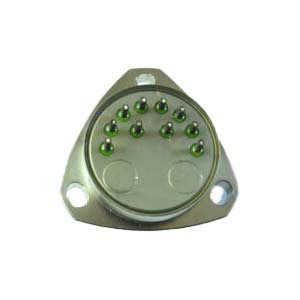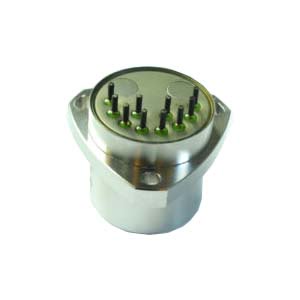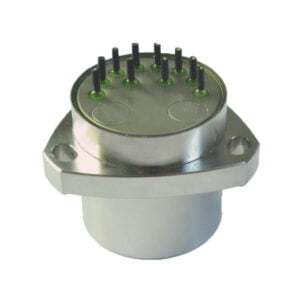Silicon micro-resonant sensor is developed on the basis of micro-electromechanical technology (MEMS).Resonant accelerometer, Silicon Oscillating Accelerometer, referred to as SOA. It has the advantages of small size, light weight, low power consumption, high measurement accuracy, good stability, direct output of quasi-digital quantity, easy to communicate with the computer and so on.It has become an important development direction of microsensors. The core of the resonant sensor is the resonator (including the beam, film, ring and other mechanical structures). The resonator vibrates with its own natural resonant frequency under the control of the positive feedback closed-loop system composed of excitation and pick-up units.The physical quantity to be measured (force, pressure, acceleration, etc.) can change the resonant frequency of the resonator through a conversion mechanism, and the measurement of the physical quantity to be measured can be realized by detecting the change of the resonant frequency. The resonant frequency of a mechanical mechanical structure is related to its mechanical stiffness, mass and damping. In micro-resonant sensors, the most common method is to change the stiffness of the resonant structure, which is to change its axial stress for micro-mechanical beams. The resonant beam accelerometer uses the inertial force formed by acceleration to transform into the axial stress of the vibrating beam, and then changes its resonant frequency to detect the acceleration value. Therefore, the conversion efficiency of inertia force-axial stress determines the sensitivity of the accelerometer.
There are two kinds of micro-resonant beam accelerometers commonly used: cantilever beam type and double tuning fork type. Cantilever beam type, simple production, the use of bending stress amplification principle, inertia forces-axial stress conversion efficiency is high, but the symmetry is poor, there is cross interference, and it is not easy to achieve the differential output structure to suppress the common mode signal and temperature and other external factors caused by the error. The double tuning fork, borrowed from the quartz vibration beam accelerometer, adopts the differential output structure, but the axial stress is amplified by the lever principle, the inertia forces-axial stress conversion efficiency is low, and the sensitivity is not high.
The sound frequency of a string is different when the tension is different. The principle of the resonant accelerometer is the same. The vibration beam is fixed at one end and connected to a mass at the other end. When there is acceleration in the vibration beam axis direction, the beam will be subjected to axial force. The tension in the beam changes, and its natural frequency changes accordingly. If a certain excitation is applied to the beam, its natural frequency can be measured by detecting its response, and then the acceleration can be measured. The application of excitation and the detection of response are usually achieved by a comb mechanism.
Quartz Accelerometer, as a kind of resonant accelerometer, has outstanding characteristics such as high precision, large range, low power consumption, direct frequency pulse output, etc. Represented by ER-QA-03A High Performance Quartz Accelerometer, It is often used in inertial measurement and test systems in aerospace and aviation fields. Static and dynamic tests are also available. Future inertial systems require high reliability, low cost, small size and appropriate performance of inertial instruments. Quartz resonant accelerometers fall into this category.
The characteristic of SOA is that it reflects the change of acceleration by changing the characteristics of the second-order system itself, which is different from the accelerometers of capacitive type, piezoelectric type and optical waveguide type.
The common structures of SOA include S structure and double-ended tuning fork (DETF). The schematic diagram of the S structure is shown in the following figure. The DEFT type is to add a set of mechanisms symmetrical to the left side of the other half of the mass. DEFT is currently the mainstream structure of SOA.
If you want to get more details about accelerometer,pls visit https://www.ericcointernational.com/accelerometer/
More Technical Questions
1.What is Sensitivity and Measurement Range in Quartz Accelerometer?
2.Quartz Accelerometer VS MEMS Accelerometer
3.Why do we Need Accelerometer?
4.What can you do with an Accelerometer?
5.What Effect Does Temperature Have on Quartz Flexible Accelerometer?
6.Multi-Dimensional Understanding of High Precision Quartz Accelerometer
Products in Article






